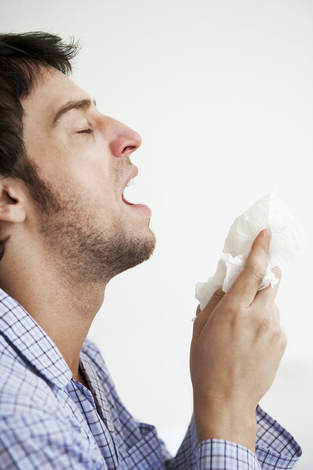
Flu Season
Influenza (commonly known as the flu) is a highly contagious respiratory infection that can cause mild to severe illness or even death. Clear spread by droplets released in the air when an infected person coughs, sneezes or talks. it may also be transmitted by touching a contaminated surface like a doorknob and then touching your eyes, nose or mouth. Risk of infection is greater in highly populated areas like schools one sneeze can travel through the air at 80 miles per hour and reach a destination as far as 30 feet away.
Symptoms of the flu generally appear 1 to 4 days after exposure and can be mild to very severe. the most common symptoms are fever (100 degrees Fahrenheit or greater) headache, muscle aches, chills, tiredness, cough, runny nose.
Flu activity peaks in the United States generally between December and February. already this season, it has been blamed for more death than this time last year. While it can affect people of all ages, the older population are generally the worst affected. Others at high risk include children, pregnant women and those with chronic conditions like asthma, diabetes or heart and lung disease. For these reasons, the Center for Disease Control (CDC) continues to recommend that every 6 months old and older get vaccinated. It is the best way to reduce the chances that you will get the flu and spread it to others. It may also make your own this milder if you do get sick. to protect yourself, your family and your clients, get vaccinated.
Types of Flu Vaccines
There are 2 types of flu vaccines: 1) the flu shot is an inactivated vaccine given with a needle usually in the arm. 2) The nasal flu spray is a live but weakened vaccine taken by spray in the nose. the strains of the flu virus changes from year to year so scientists make a different vaccine annually. Sometimes a new strain of the flu develops after the vaccine has been made and therefore it is still possible to get the flu even if you receive the flu shot.
Cold vs Flu
The cold and flu are both respiratory illnesses however they are caused by different types of viruses with different symptoms. The following chart may help to distinguish between the two.
Flu Prevention tips
Wash your hands: The flu virus can be spread by direct contact like sharing a drink or indirectly such as when an infected person sneezes on hands then touches a doorknob. the virus can live on surfaces for up to 8 hours. therefore it is very important to wash hands regularly with soap and water or an alcohol based hand rub.
Cover your sneezes and coughs: When you cough or sneeze, cover your mouth and nose with a tissue instead of your hands. Immediately throw away the tissue. If tissue is not available, cover with your sleeve and try to avoid touching your eyes.

 RSS Feed
RSS Feed